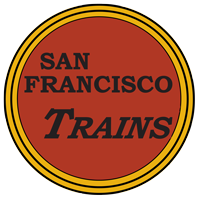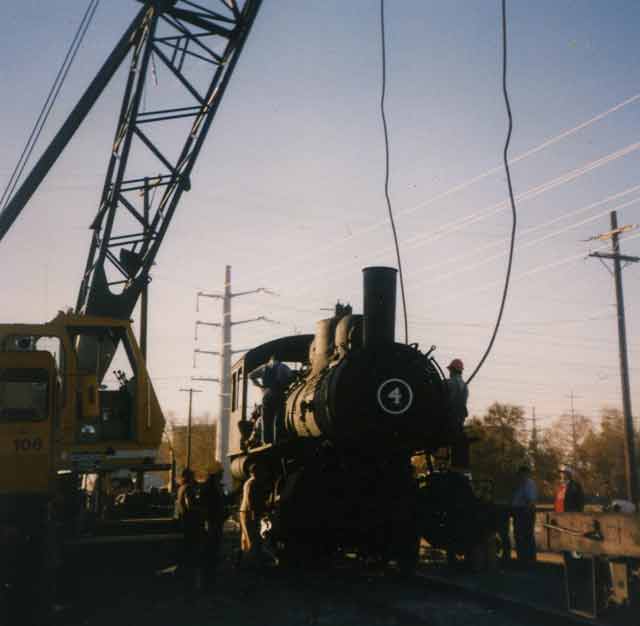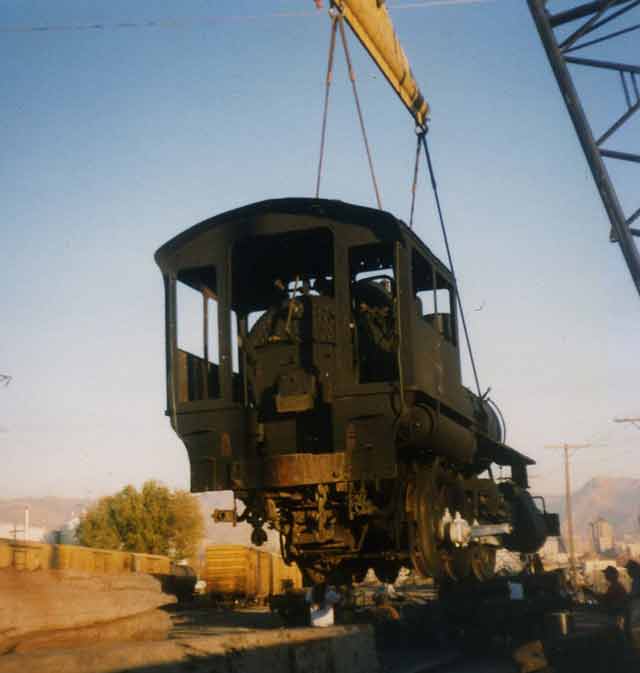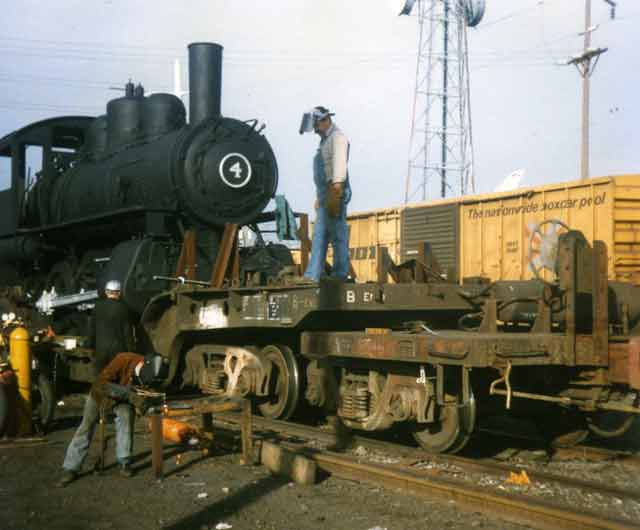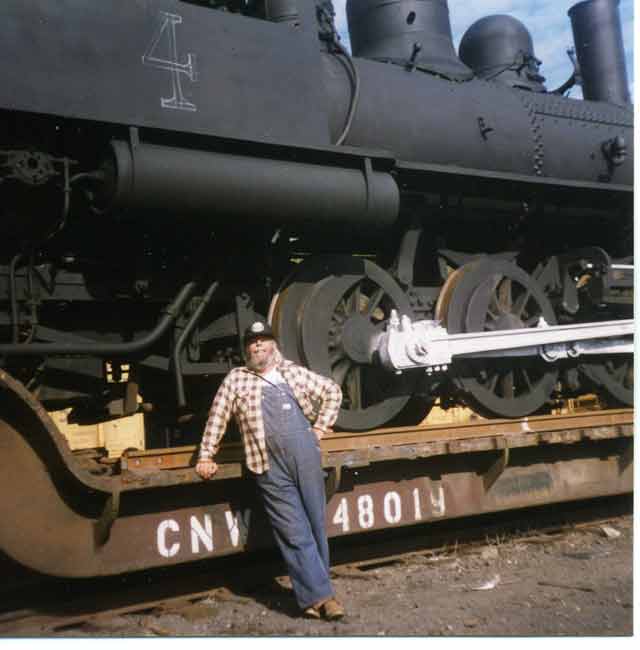The Missing Years
…In the Scrapyard
Following the end of the War, the Vulcan was sold for scrap to the M. Davidson Company of Stockton, CA, where it joined other locomotives awaiting a final meeting with the torch. For it and three others, however, that meeting never came. Whether due to practicality or sentimentality, these four locomotives – an electric box motor from a local interurban line, a three-truck Shay geared locomotive that hauled logs up in the Sierra Nevada, a six-coupled saddle tanker that served an ore plant in Shasta County, and our own six-coupled Vulcan switcher – were kept intact for resale. Here they sat for two decades.
The locomotives were gradually forgotten about, becoming obscured by a massive pile of salvaged rubber tires. Steam Locomotive & Railway Tradition commented in 1965 that the Vulcan was “last heard of in a Stockton junkyard in 1946,” unaware that it hadn’t budged behind its rubbery tomb. Indeed, as the scrapyard changed hands to Levin Metals in 1967, it seemed they would become forgotten even by the owners…
And then the tires caught fire.
As it turns out, rubber burns – and it burns hot. For the Vulcan, damage was most severe to the sheet metal on the right side (where the tires had been stacked), with the side wall of the tender outright buckling under the intense heat and the cab being left with permanent ripples. Whether any cab wood, such as the fold down chairs, doors, or interior lath were left at that time, we will probably never know.
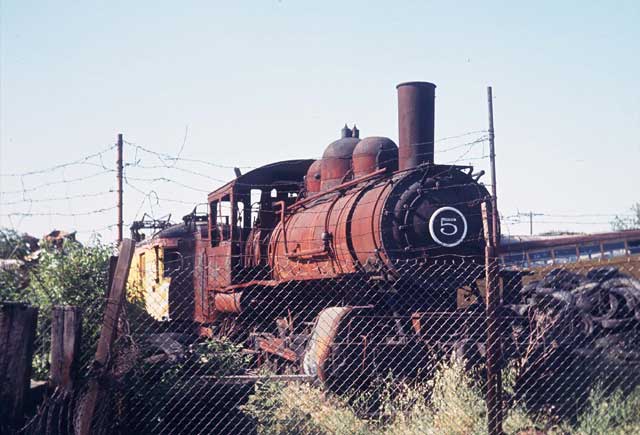
It was the Summer of Love in San Francisco, but the “Stockton Steamers” still had their own day in the limelight. Mike Mangini sighted the locomotives during the fire, and they once more became the subject of railfan attention (and calls for preservation). Within the year, the electric locomotive was donated to the Bay Area Electric Railroad Association. The three steamers were shortly donated to the Promontory Chapter of the National Railway Historical Society, but remained on Levin Metals’ property until 1971, when they were finally shipped to Utah for restoration to service on the Wasatch Mountain Railway.
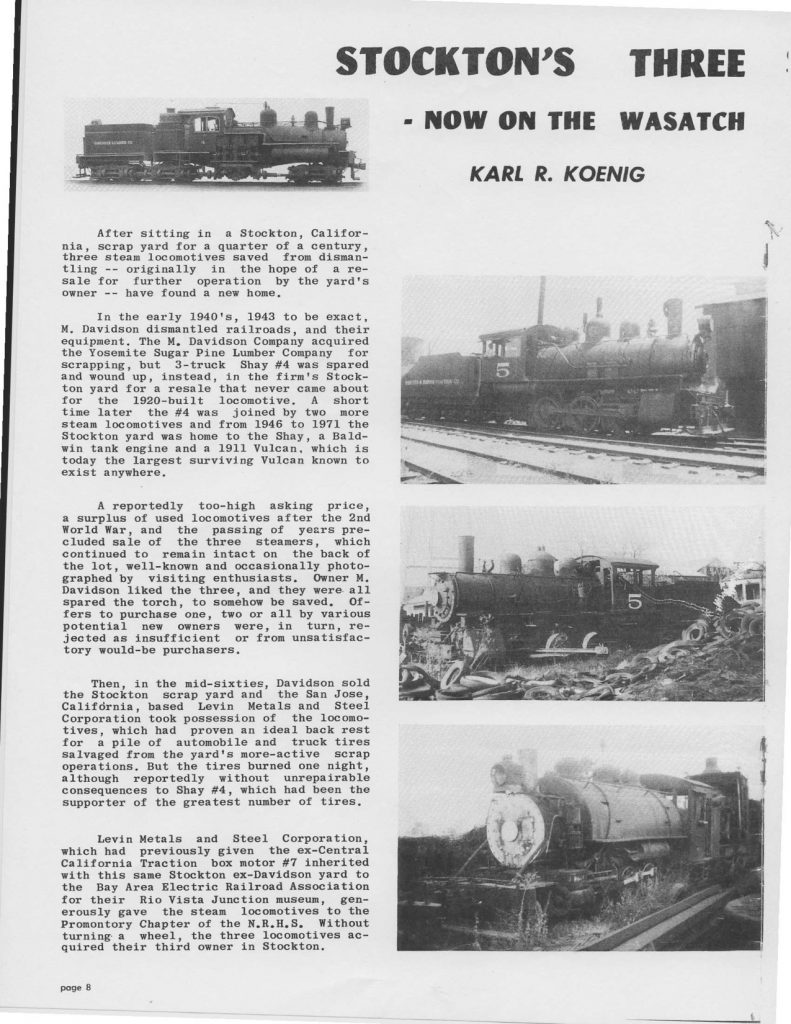
…On the Wasatch (or Not)
Pacific News predicted the Vulcan was “sure to be a jewel of an addition in Utah,” but this was unfortunately hardly the case. Of the three “Stockton Steamers,” only the Shay locomotive was restored to operation. Now the status of the engine (yet again) gets a bit more mysterious. The engine was plumbed with a gas burner and automatic boiler control for use as a stationary boiler. We’ve been told that this service was at a brewpub in a mall, but the folks in Salt Lake City haven’t provided us with any written accounts of what happened to the engine during this time. The engine was renumbered 5 while under the ownership of the NRHS.
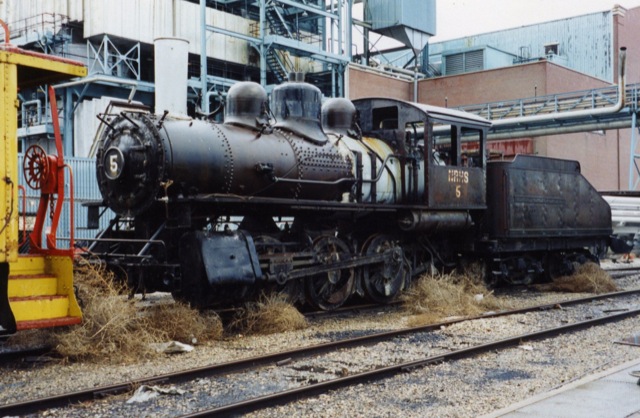
Come 1992, the Wasatch Railway Museum was looking for a new home for the misfit Vulcan. Kyle Wyatt, now Curator of History at the California State Railroad Museum, tried to contact the Golden Gate Railroad Museum and notify them that the locomotive was up for grabs.
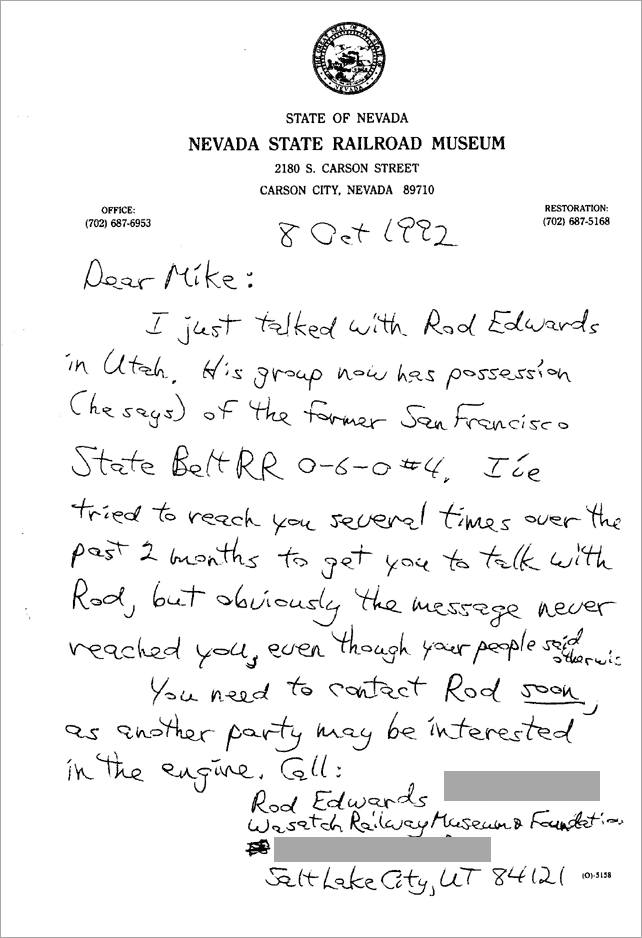
After 2 months of trying to contact them, Wyatt’s message finally got through to GGRM, who expressed interest in the locomotive. Wyatt traveled up to Salt Lake City to take a few photos.
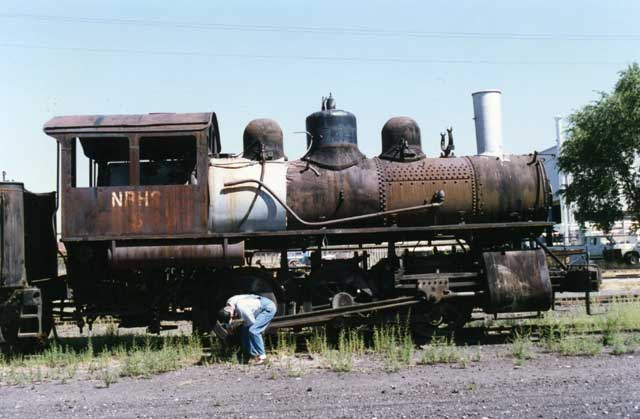
Of course, the next step involved negotiations and negotiations. The price was discussed, and rent on the track space added up. On November 13, 1995, GGRM members got to work upon arrival in Salt Lake City. Don Michelettti, Mike Mangini, John Manley, Jim Bunger and Steve Case were joined by local hero John Rimmasch and the first day was spent removing the jacket and giving the whole thing a spray of latex paint. Ron Johnson arrived on the 16th.
The engine and tender were loaded onto flatcars and the welding began. It was important to transport this loco safely – the loadmaster wasn’t letting that cargo come free.
By December 1st the engine was in South San Francisco without damage. All that remained was the last 7 miles to the GGRM at Hunter’s Point Naval Shipyard.
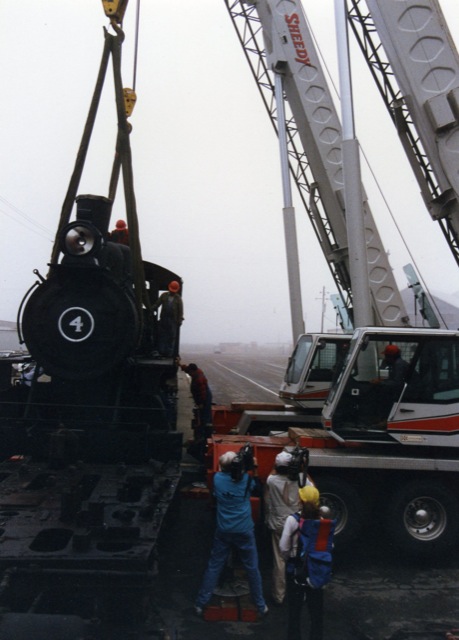
Thanks to the efforts of Ray Brown, we made the six o’clock news. The #4 had been away from California for 25 years, from the SF Bay Area for 55 years, from the City proper for 63 years, and now it was back to turn a new chapter.
